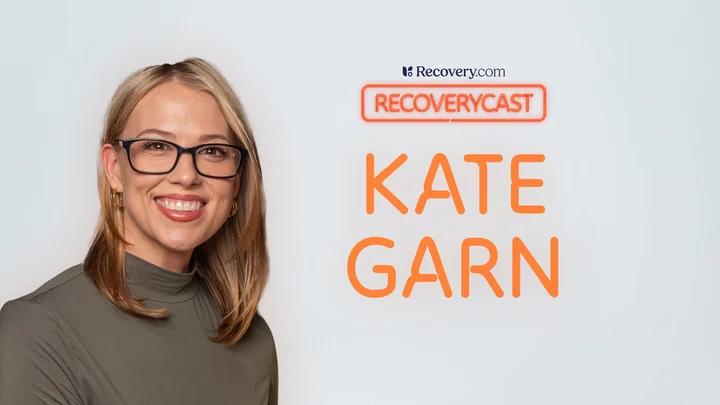Kate Garn's 13 Insights on Breaking Free From Hidden Alcoholism



Caroline Beidler, MSW is an author, speaker, and the Managing Editor of Recovery.com. She writes about topics related to addiction, mental health, and trauma recovery, informed by her personal experience and professional expertise.




Caroline Beidler, MSW is an author, speaker, and the Managing Editor of Recovery.com. She writes about topics related to addiction, mental health, and trauma recovery, informed by her personal experience and professional expertise.
Table of Contents
- 1. The Gradual Descent: From Social Drinking to Coping Mechanism
- 2. Postpartum Depression: A Turning Point Towards Dependence
- Explore Alcohol Treatment Centers
- 3. The Illusion of Control: Functional Alcoholism
- 4. The Internal Disconnect: Masking Pain with Performance
- 5. Hitting Rock Bottom: The Desire to Not Exist
- 6. Seeking a Lifeline: The First AA Meeting
- 7. The Power of Connection: Finding Common Ground
- 8. Beyond Dry Drunk: Embracing the Steps
- 9. Finding Motivation: Doing It for Someone Else
- 10. The Vulnerability of Sharing: TikTok as a Platform for Connection
- 11. The Power of Unseen Support: “I Love Who You Are Sober”
- 12. Navigating the Journey: Amends and Self-Compassion
- 13. The Misunderstanding of Shame: Finding Strength in Vulnerability
Kate Garn joined Recoverycast to share her powerful journey through the depths of alcohol dependence and her inspiring climb toward sobriety. Her story, filled with raw honesty and vulnerability, sheds light on the often-hidden struggles of functional alcoholism, the impact of postpartum depression, and the transformative power of finding connection in recovery. Kate’s narrative underscores the crucial message that addiction doesn’t always look like the stereotypical image, and that finding a path to a healthier life is possible.
1. The Gradual Descent: From Social Drinking to Coping Mechanism
Kate’s relationship with alcohol began in high school, a seemingly typical experience for many. However, what started as occasional social drinking gradually morphed into a coping mechanism, particularly as she navigated the pressures of young adulthood and the drinking culture prevalent in hair school and the service industry.
“It had just become something that was normal to me,” Kate reflected. “It was routine. I wanted to unwind after work. I wanted to, you know, my body hurt, my mind was exhausted, everything. And I just wanted to numb it.” This highlights how easily social drinking can transition into a reliance on alcohol to manage stress and emotions.
2. Postpartum Depression: A Turning Point Towards Dependence
The arrival of her son brought immense joy, but also an overwhelming wave of postpartum depression, exacerbated by a traumatic birth experience. Kate recounted the harrowing moments after her son’s birth, stating, “I still remember the feeling that I had when he started breathing…” This trauma created significant anxiety and sleep deprivation, leading her to self-medicate with alcohol.
“When I stopped breastfeeding after three months, I started drinking all the time. ’cause I could now. Mm-hmm. You know, and I knew that’s what I had used before to calm me down.” This period marked a significant shift towards using alcohol as a primary way to cope with intense emotional distress. Postpartum depression is a serious condition affecting many new mothers and can significantly increase the risk of substance use as a form of self-treatment1.
Explore Alcohol Treatment Centers
3. The Illusion of Control: Functional Alcoholism
Despite drinking frequently and heavily, Kate’s struggles weren’t immediately apparent to those around her. Even her ex-husband, who witnessed her drinking firsthand, didn’t recognize the extent of her dependence. “‘I wasn’t hiding it. You know, he was right there. But even he didn’t think she’s an alcoholic. And when I look at it, I’m like, how? How did you guys not think it?'”
This illustrates the phenomenon of functional alcoholism, where individuals maintain their daily responsibilities while still struggling with alcohol dependence. This can make it difficult for loved ones to recognize the problem and for the individual to acknowledge it themselves.
4. The Internal Disconnect: Masking Pain with Performance
Kate astutely pointed out the internal conflict she experienced, feeling the need to present a certain image to the world while battling inner turmoil. Tom Farley agrees, stating “They’re putting out this person that they think the world wants to see or that they need to be. And it’s not real. And you feel that inside this doesn’t, this is not real for me. And so therefore the only way I to deal with that feeling, at least for me, was to, was to drink.”
This resonates with many individuals who use substances to cope with feelings of inadequacy or inauthenticity. The constant performance can be exhausting and isolating, further fueling the cycle of dependence.
5. Hitting Rock Bottom: The Desire to Not Exist
Kate’s journey reached a critical point where she no longer wanted to live with the pain and dependence. “On the day that I stopped drinking, I was, you know, it was a bad place. It was scary and I had struggled for a long time, but I, it had hit its peak.” This moment of despair often serves as a catalyst for change, a stark realization that the current path is unsustainable and life-threatening. The fear of the impact her addiction would have on her son also played a significant role in her decision to seek help.
6. Seeking a Lifeline: The First AA Meeting
Facing her desperation, Kate took a courageous step and searched for resources. “I knew what you see on tv, AA, or rehab. Like, that’s where my mind went. So that’s what I Googled that morning.” Her discovery of a local AA meeting, particularly an all-women’s meeting, proved to be a pivotal moment. The sense of connection and shared experience she found there was crucial in her early sobriety.
7. The Power of Connection: Finding Common Ground
Walking into that first meeting, Kate had preconceived notions about what it would be like. “For me, when I pictured AA meetings, I didn’t picture a bunch of women like me. I pictured a bunch of women who had lost everything. Homeless, you know, worst case scenario.”
Instead, she found a community of regular women who understood her struggles. “To see and hear what these women had to say really like, struck a chord with me. Like, I was like, wow. They are regular people. Living, you know, life every day. Like a lot of people do. Their stories, some of them very similar to mine.” This sense of belonging and relatability is a cornerstone of successful recovery.
8. Beyond Dry Drunk: Embracing the Steps
Early in her sobriety, Kate described herself as a “dry drunk,” indicating that she had stopped drinking but hadn’t yet addressed the underlying issues fueling her addiction. It wasn’t until she began working the 12 Steps that she started to experience true recovery and healing.
“When I finally got, you know, to the point where I was ready to work the steps, because I think before that I just really wasn’t ready. I couldn’t get myself there. So when I finally started doing that and seeing the benefits of it…” The 12 Steps provide a structured framework for self-reflection, accountability, and spiritual growth, which are vital for long-term sobriety.
9. Finding Motivation: Doing It for Someone Else
While the common advice in recovery is to focus on oneself, Kate found her primary motivation in her son. “‘They say do it for you. I do it for him. I’m second there and I know that’s, you know, everyone’s like, no, it’s you. And it’s like, I wouldn’t be here if it wasn’t for him. It is healthy for me to think this is for Mac because I didn’t value my own life like that.'” This highlights that the path to recovery can be deeply personal, and finding a strong external motivator can be a powerful initial driving force.
10. The Vulnerability of Sharing: TikTok as a Platform for Connection
Kate’s journey took an unexpected turn when she began sharing her experiences on TikTok. This platform became an outlet for her raw honesty and vulnerability, creating a space for connection with others facing similar challenges. “I’m a vulnerable person. I’m raw, I’m honest. That’s what my TikTok is… I just am who I am.” Her willingness to share her struggles openly has resonated with a large audience, fostering a sense of community and reducing the stigma surrounding addiction.
11. The Power of Unseen Support: “I Love Who You Are Sober”
A poignant moment in Kate’s story was her mother’s heartfelt affirmation during a difficult time in early sobriety. “I was crying, and my mom came over and she was like being super supportive to me and I just told her, you know, I want a drink. And she was like, but I love who you are sober. And it just like I do, I get super emotional when talking about that because it’s like, that just shows me like they have never known me.” This powerful statement underscored the profound difference sobriety had made in Kate’s true self, a self that had been obscured by alcohol for so long.
12. Navigating the Journey: Amends and Self-Compassion
Kate touched upon the challenging aspect of making amends in recovery, acknowledging the difficulty of confronting past actions. She also highlighted the importance of self-compassion, recognizing the progress she has made rather than dwelling solely on past mistakes. “‘Getting sober, you realize so many things about yourself when you get sober.’ ‘Well, it’s about your pain, not theirs.'” This emphasizes the introspective nature of recovery and the need to focus on personal healing.
13. The Misunderstanding of Shame: Finding Strength in Vulnerability
Kate addressed the negative feedback she sometimes receives for being so open about her struggles, with some suggesting she should be ashamed. However, her vulnerability is precisely what allows others to feel less alone. By sharing her truth, Kate is breaking down stigma and offering hope to others on their own recovery journeys.
Kate’s story is a testament to the resilience of the human spirit and the power of seeking help and connection. Her journey from functional alcoholism and the depths of postpartum depression to a place of sobriety and open sharing offers a beacon of hope for anyone struggling with addiction. It reminds us that recovery is possible, and that finding a supportive community can make all the difference.
-
New item… Chapman, Shawna L. Carroll, and Li-Tzy Wu. “Postpartum Substance Use and Depressive Symptoms: A Review.” Women & Health, vol. 53, no. 5, July 2013, pp. 479–503. PubMed Central, . https://pmc.ncbi.nlm.nih.gov/articles/PMC3742364/
Our Promise
How Is Recovery.com Different?
We believe everyone deserves access to accurate, unbiased information about mental health and recovery. That’s why we have a comprehensive set of treatment providers and don't charge for inclusion. Any center that meets our criteria can list for free. We do not and have never accepted fees for referring someone to a particular center. Providers who advertise with us must be verified by our Research Team and we clearly mark their status as advertisers.
Our goal is to help you choose the best path for your recovery. That begins with information you can trust.





